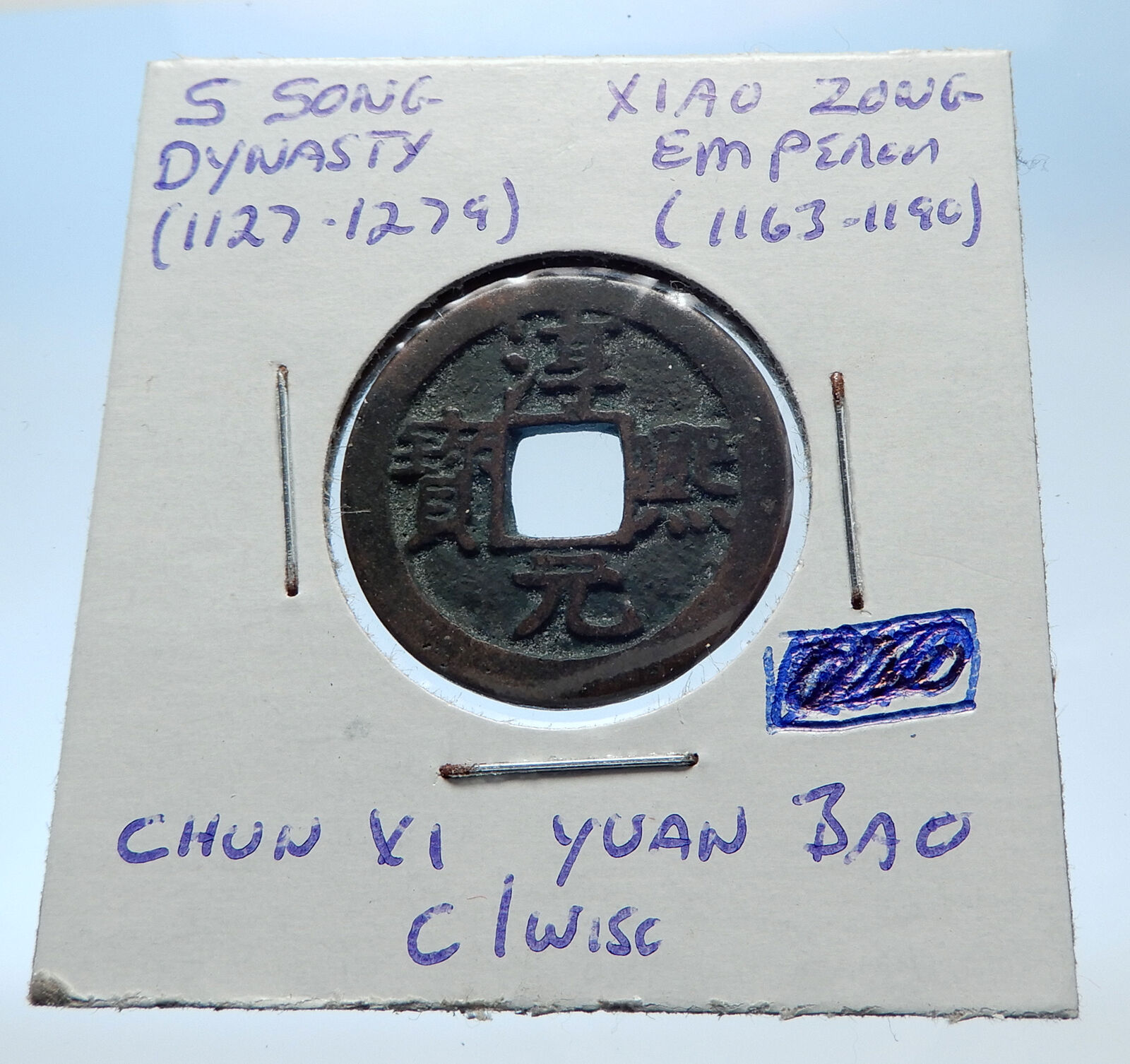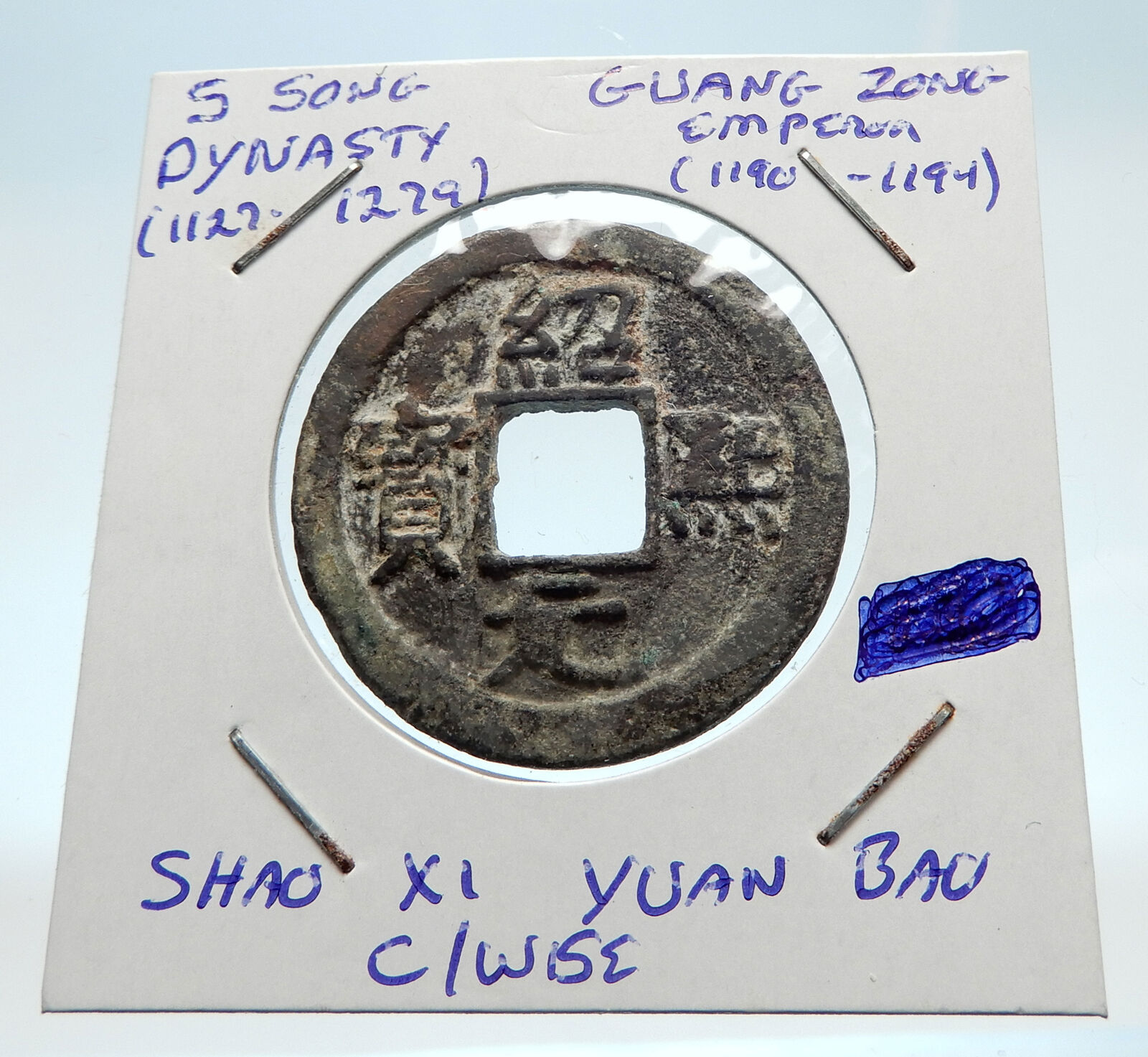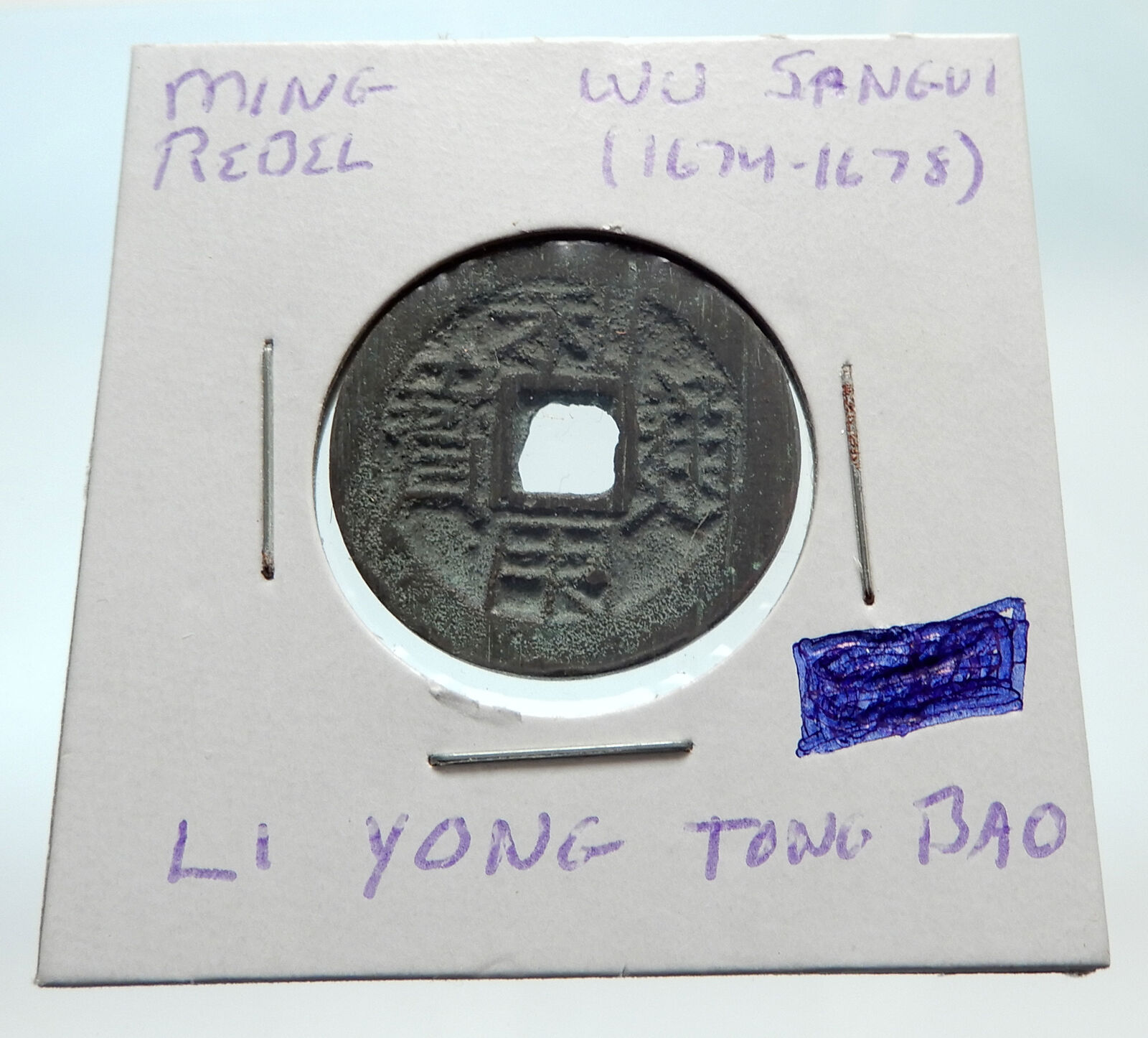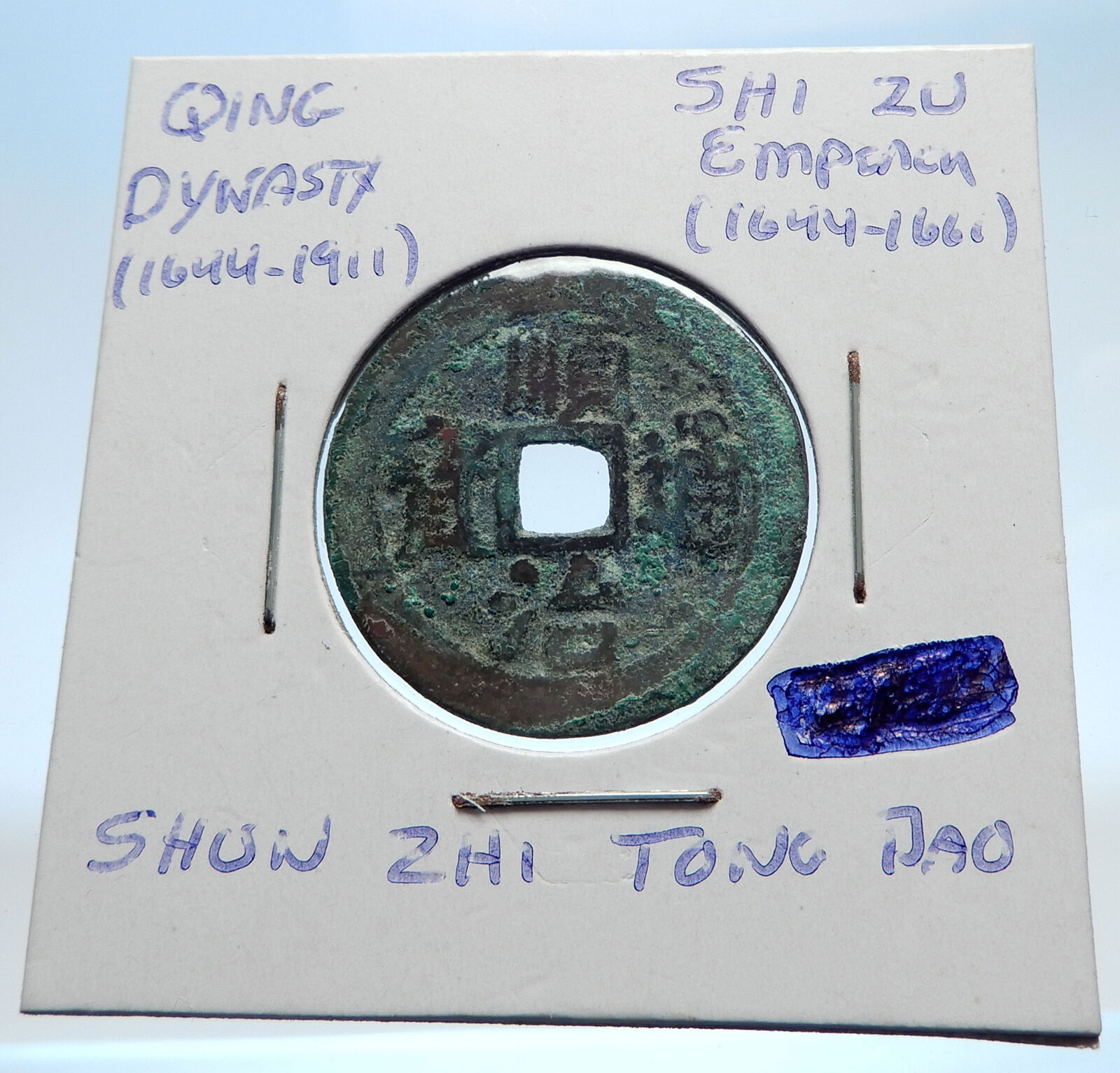|
China – Qin Dynasty – Ban Liang
Bronze Ban Liang 12 Zhu Cash Token, 36mm (7.83 grams), Struck circa 221 BC
Chinese characters.
You are bidding on the exact item pictured, provided with a Certificate of Authenticity and Lifetime Guarantee of Authenticity.
The Ban Liang (Traditional Chinese: 半兩 ; Pinyin: bàn liǎng) was the first unified currency of the Chinese empire, introduced by the first emperor Qin Shi Huang around 210 BC (although coins with this inscription already circulated in the State of Qin prior to unification). It was round with a square hole in the middle. Before that date, a variety of coins were used in China, usually in the form of blades (knife money) or other implements, though round coins with square holes were used by the State of Zhou before it was extinguished by Qin in 249 BCE.
The Ban Liang corresponds to a “half tael” (半兩), or twelve zhu (銖, about 0.68 grams). It typically weighs between ten and six grams, roughly corresponding to the Greek stater.
The standardization of currency with this round coinage was part of a broader plan to unify weights, measures or axle width during the Qin empire. Ban Liang coins continued to be used under the Western Han dynasty until they were finally replaced by the Wu Zhu cash coins in 118 BC.
Cash was a type of coin of China and East Asia, used from the 4th century BC until the 20th century AD. Originally cast during the Warring States period, these coins continued to be used for the entirety of Imperial China as well as under Mongol, and Manchu rule. The last Chinese cash coins were cast in the first year of the Republic of China. Generally most cash coins were made from copper or bronze alloys, with iron, lead, and zinc coins occasionally used less often throughout Chinese history. Rare silver and gold cash coins were also produced. During most of their production, cash coins were cast but, during the late Qing dynasty, machine-struck cash coins began to be made. As the cash coins produced over Chinese history were similar, thousand year old cash coins produced during the Northern Song dynasty continued to circulate as valid currency well into the early twentieth century.
In the modern era, these coins are considered to be Chinese “good luck coins”; they are hung on strings and round the necks of children, or over the beds of sick people. They hold a place in various superstitions, as well as Traditional Chinese medicine, and Feng shui. Currencies based on the Chinese cash coins include the Japanese mon, Korean mun, Ryukyuan mon, and Vietnamese văn.
|










